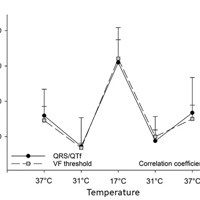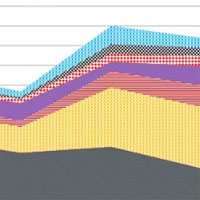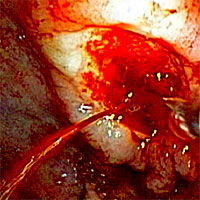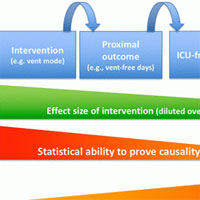Tag: mortality

A Novel ECG-biomarker for Cardiac Arrest During Hypothermia
Treatment of arrhythmias evoked by accidental or therapeutic hypothermia and rewarming remains challenging. We aim to find an ECG-biomarker that can predict ventricular arrhythmias at temperatures occurring in therapeutic... read more

Impact of Protocolized Diuresis for De-resuscitation in the ICU
Using a diuresis protocol for volume de-resuscitation, we demonstrated a significant decrease in net cumulative fluid balance at 72 h following shock resolution, with potential benefit on clinical outcomes including renal... read more

Validation of Neuromuscular Blocking Agent Use in ARDS
The use of Neuromuscular Blocking Agents (NMBA) could significantly decrease mortality in moderate-to-severe acute respiratory distress syndrome (ARDS) patients and decrease the incidence of barotrauma during mechanical ventilation.... read more

Empirical Anti-MRSA Therapy Not Associated with Reduced Mortality for Patients with Pneumonia
This study suggests that empirical anti-MRSA therapy was not associated with reduced mortality for any group of patients hospitalized for pneumonia. These results contribute to a growing body of evidence that questions the... read more

1 in 5 Patients Die within 90 Days After LVAD Implantation
The aim of the study was to analyze early mortality after continuous-flow left ventricular assist device (LVAD) implantation which remains high. In the EUROMACS registry, approximately 1 in 5 patients die within 90 days... read more

Could Stress Ulcer Prophylaxis Increase Mortality in High-acuity Patients?
Although considerable uncertainty remains, the inferences from SUP-ICU and PEPTIC are consistent with the hypothesis that proton pump inhibitors (PPIs) increase the risk of death in patients with higher illness severity.... read more

It’s Insane to Keep Using Mortality As a Primary Endpoint in Critical Care Trials
Mortality is an important endpoint, so we shouldn't ignore mortality trends entirely. However, the vast majority of these will be spurious. Thus, we should generally not change practice due to them. In the history of critical... read more

Relative Hyperglycemia Predicts In-Hospital Mortality in Critically Ill Patients
Unlike absolute hyperglycemia, relative hyperglycemia, as assessed by the stress hyperglycemia ratio, independently predicts in-hospital mortality in critically ill patients across the glycemic spectrum. Future studies should... read more

Epinephrine During Resuscitation of Traumatic Cardiac Arrest and Increased Mortality
Epinephrine administered during in-hospital resuscitation was associated with lower 7-day survival rate in patients with out-of-hospital cardiac arrest (OHCA) following trauma. While we examined the outcomes of selected... read more

Early Identification of Disease Progression in Patients with Suspected Infection Presenting to the ED
In patients presenting to the emergency department (ED) with a suspected infection, the blood biomarker MR-proADM could most accurately identify the likelihood of further disease progression. Incorporation into an early sepsis... read more

Clinical Characteristics of Patients With 2019 Novel Coronavirus
In this single-center case series of 138 hospitalized patients with confirmed 2019 novel coronavirus (2019-nCoV)–infected pneumonia (NCIP) in Wuhan, China, presumed hospital-related transmission of 2019-nCoV was suspected... read more

Glucose Variability as Measured by Inter-measurement Percentage Change is Predictive of In-patient Mortality in Aneurysmal Subarachnoid Hemorrhage
Reduced glucose variability is highly correlated with in-patient survival and long-term mortality in subarachnoid hemorrhage (aSAH) patients. This finding was observed in the non-diabetic and well-controlled diabetic patients,... read more

Global, Regional, and National Sepsis Incidence and Mortality: 1990-2017
Globally, there were an estimated 60.2 million cases of sepsis in 1990 and 48.9 million cases of sepsis in 2017. This change represents a decrease of 18.8%. Of all incident cases of sepsis in 2017, 33.1 million occurred... read more

AKI Epidemiology, Risk factors, and Outcomes in Critically Ill Patients 16-25 Years of Age Treated in an Adult ICU
Using the KDIGO criteria for both serum creatinine and urine output to define acute kidney injury (AKI), 39.8% of patients between the ages of 16–25 met AKI criteria during admission to an adult tertiary care center, indicating... read more




